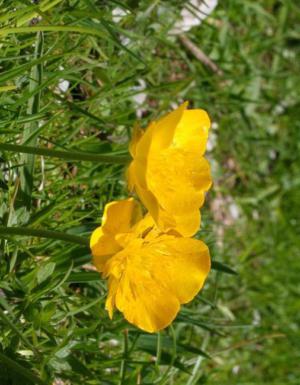Mountain Buttercup
(Ranunculus montanus)

Description
"Pet poisonous” – Toxic parts: entire plant esp. leaves The mountain buttercup (Scientific name Ranunculus montanus Willd , 1799 ) is a plant of the family of Ranunculaceae , common in high altitude alpine meadows. The generic name ( Ranunculus ), passing through the Latin , derives from the Greek Batrachion , and means "frog" (it is Pliny writer and Latin naturalist, who informs us of this etymology ) as many species of this genus prefer the wet, shady and marshy areas, natural habitat of amphibians . The specific name ( montanus ) refers to areas of its typical habitat . The currently accepted scientific binomial ( Ranunculus montanus) was proposed by the botanist, German pharmacist and emigrant Carl Ludwig Willdenow (Berlin, 22 August 1765 - Berlin, 10 July 1812) in a publication of 1799. It is a perennial and herbaceous terrestrial plant whose average height varies between 5 and 40 cm. These plants are termed scaperous hemicryptophytes ( H scap ), or plants with buds wintering at ground level and protected by litter or snow. The whole plant is free of oil cells.
Taxonomic tree:







